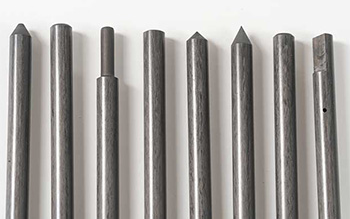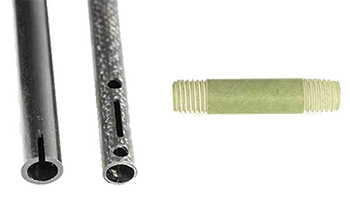

Composite materials are engineered components that combine two or more constituent elements with distinct properties. Carbon fiber composites combine carbon fibers and epoxy resin to create a finished carbon fiber-reinforced plastic (FRP) composite product. Fiberglass composites combine glass fibers and resin to create a finished glass fiber-reinforced plastic (FRP) composite product. Composites machining refers to shaping and finishing these FRP composite products through cutting, milling, or other mechanical methods. Composites machining necessitates specialized tools and techniques due to the composite materials’ layered structures and varying hardness.
At Goodwinds Composites, we focus on tailoring composite materials to meet specific requirements. We are located in Mount Vernon, Washington, and we take pride in using materials sourced and fabricated exclusively within the United States. Moreover, our state-of-the-art facilities are equipped with advanced techniques to guarantee the strength and durability of our products.
Techniques Involved in Composites Machining
Each of the following techniques plays a vital role in the overall process of machining composites:
Cutting
Cutting involves using blades, knives, or abrasive tools to separate or shape composite materials. Precision is paramount to avoid delamination, a separation of the layers within the composite structure. The cutting process can be manual or automated, with careful attention paid to the orientation of the fibers to maintain the material’s integrity. Nearly every composite rod or tube that we ship to customers is cut at one stage or another. We can precision cut to within .005”.
Routing
Routing uses a rotating cutting tool to trim excess material or shape composite materials. This process is especially effective for achieving specific geometries and edge profiles. Computer numerical control (CNC) routers typically enhance precision by allowing for automated and programmable machining, ensuring consistency across multiple parts.

Milling
Milling is a versatile technique in machining composites that utilizes rotary cutters to remove material, shaping the composite into the desired form. This process is suitable for a wide range of composites and allows for producing complex shapes. In addition, CNC milling machines offer enhanced precision and repeatability. Many of our customers request precision-milled notches in the ends of their composite rods and tubes so that they will properly index into their products.
Composite Trimming and Finishing
Composite trimming and finishing encompass the final stages of machining to achieve the desired surface quality and dimensional accuracy. Specialized tools are used to remove excess material and refine the component’s shape. The process may also include polishing or sanding to achieve a smooth surface finish or bonding finish, grinding to attain a specific outside diameter, or chamfering to achieve a soft edge on the end of the composite.
Drilling
Drilling creates holes in composite materials, requiring careful control to prevent fraying or splintering of the workpiece. Specialized drill bits designed for composites — such as diamond-coated or carbide-tipped bits — help achieve clean and accurate holes. The drilling process also considers factors like drill speed, feed rate, and coolant usage to optimize results. Not only is Goodwinds Composites able to drill holes through the side walls of composite rods and tubes, we are also capable of precisely drilling longitudinal holes in the end of the rod.

Benefits of Composites Machining
Benefit from the most significant advantages of machining composites:
Maintain Material Properties
Composite materials offer exceptional strength while being lightweight, making them ideal for aerospace, automotive, and other applications where weight reduction is critical. Machining composites allows for precise component shaping without sacrificing the material’s inherent strength.
Design Flexibility
Machining techniques offer design flexibility, allowing the production of intricate and complex shapes that may be challenging or impossible with traditional materials. This is particularly valuable in industries like automotive and aerospace, where aerodynamics and space utilization are crucial.
Cost Efficiency in Production
While the initial cost of composite materials may be higher than traditional materials, their specificity of purpose often leads to overall cost savings in implementation. Machining can help composite rods and tubes fit their purpose exactly and create perfect bonding surfaces.. Composites’ lightweight nature also reduces transportation expenses and energy consumption.
The advanced composites machining capabilities at Goodwinds Composites extend beyond the aerospace and automotive industries, playing a crucial role in marine, sporting goods, and other sectors. This versatility demonstrates our ability to adapt our expertise to a wide range of applications, delivering customized solutions that meet the unique demands of each industry.
Partner With Goodwinds Composites
for Composite Manufacturing Solutions
At Goodwinds Composites, we prioritize customer satisfaction by delivering not only quality composite materials but also a collaborative approach. Our highly skilled professionals have extensive mastery of the craft, ensuring that every project is executed with the utmost precision, embodying our commitment to excellence.
Our team is ready to engage with you and offer advice from years of experience in the field. This approach allows us to understand the intricacies of your project, ensuring that the solutions we design align with your goals.
Contact us today to learn more about our products and services or submit an RFQ here.



